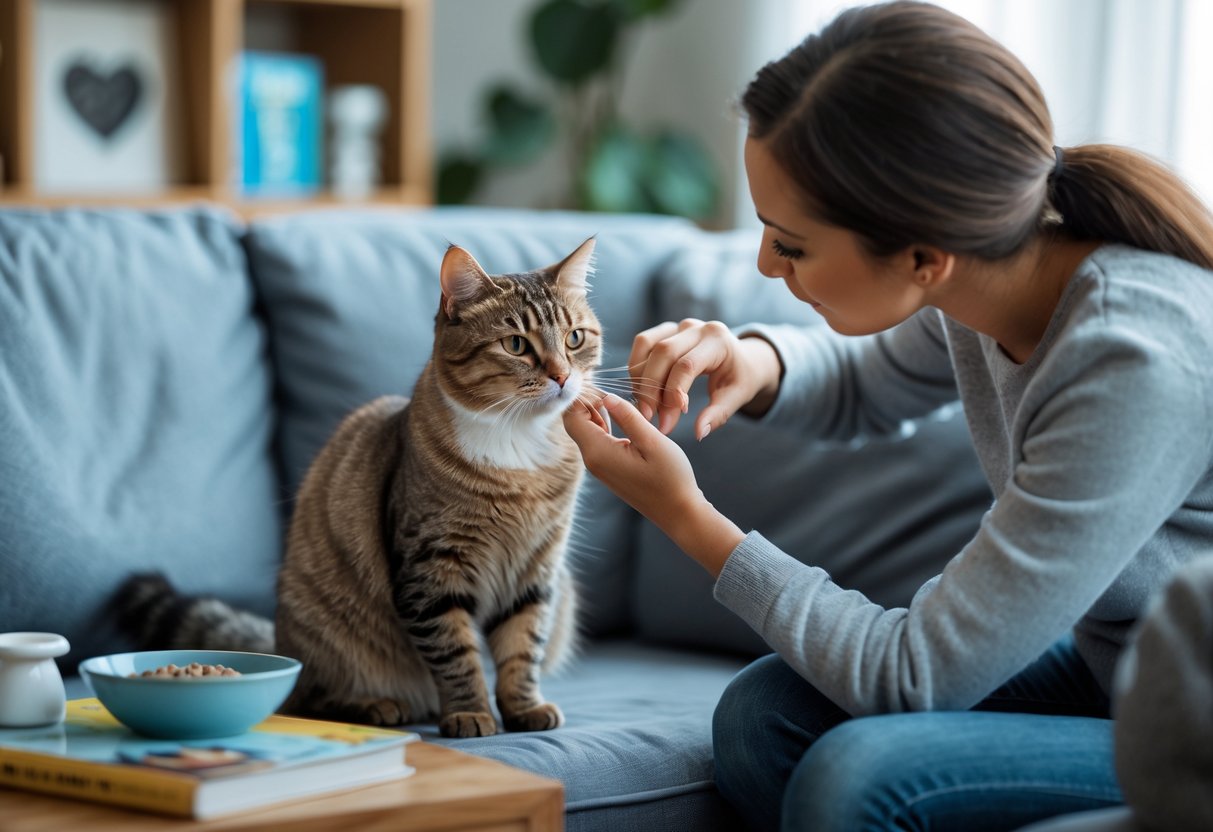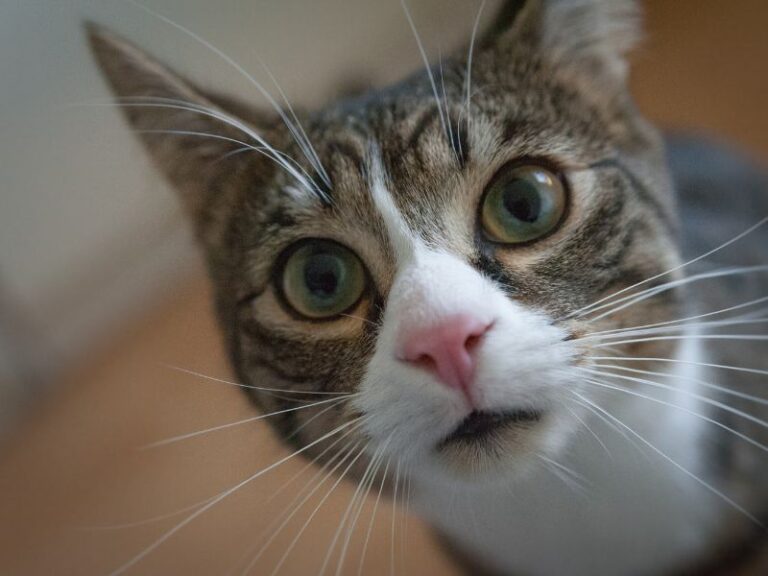When your cat coughs, it’s tough to know if it’s just a hairball or something more worrying. Cats often make similar sounds when hacking up fur, but those noises can also mean asthma, infections, or even allergies.
Figuring out when to worry about your cat’s cough can help you decide if it’s time for a vet visit or just a little extra care at home.

Watch how often your cat coughs and what happens afterward. If it’s just occasional and a hairball comes up, that’s usually nothing to stress about.
But if your cat is coughing a lot and nothing comes up, that could mean lung issues or something else going on. Pay attention to changes in appetite, energy, or breathing—those clues matter more than you’d think.
Honestly, telling the difference between a hairball hack and a serious cough isn’t always obvious. It’s one of those things that makes cat ownership a little nerve-wracking sometimes.
This guide should make it a bit easier to spot the signs and figure out when you actually need to do something. After all, we just want our cats to be comfortable and safe, right?
How to Tell If Your Cat’s Cough Is a Hairball or Something Serious

Trying to pin down if your cat’s cough is just a hairball or a bigger health problem? You’ll need to watch closely and pick up on the right signals.
Knowing the signs, causes, and warning flags can help you decide if it’s time for the vet or if you can just keep an eye on things for now.
Key Differences Between Hairballs and Cat Coughing
Hairballs happen when your cat swallows loose fur while grooming. You’ll usually hear some gagging or hacking, and then—if you’re lucky—a small, gross fur sausage appears on your rug.
This process is usually short and stops once the hairball is out. Not pretty, but pretty normal.
Coughing, though, is a different beast. It’s a forceful, dry sound meant to clear the airways, and it usually doesn’t produce anything like a hairball.
Your cat might hunch over, look uncomfortable, or even seem like they’re struggling to breathe. That’s when you start to worry a little more.
Signs that point to hairballs:
- Occasional gagging or retching
- Small, expelled hair masses
- No breathing difficulty
Signs that suggest coughing:
- Frequent dry coughs
- Wheezing or trouble breathing
- No hairball production after retching
Common Causes of Coughing in Cats
There are a bunch of reasons cats cough that have nothing to do with hairballs. Feline asthma is a big one—it causes wheezing and coughing thanks to lung inflammation.
Feline herpesvirus is another culprit. It brings on sneezing, watery eyes, and coughing, along with other cold-like symptoms.
Don’t forget allergies. Dust, smoke, pollen—they can all make your cat cough or sneeze, especially if you live somewhere stuffy or dusty.
Sometimes, though, it’s something more serious, like lung infections or even cancer. If your cat coughs a lot or seems “off,” it’s probably time for a professional opinion.
Warning Signs That Require Veterinary Attention
If your cat’s cough sticks around for more than a few days or happens a bunch every day, don’t just wait it out. Here’s what else to watch for:
- Breathing becomes rapid or labored
- Blue or pale gums (that’s a big red flag—er, blue one?)
- Persistent coughing without producing hairballs
- Loss of appetite or lethargy
- Coughing with nasal discharge or fever
These could mean feline asthma, respiratory infections, or other serious issues. Quick treatment can make all the difference.
If you spot any of these, don’t hesitate—call your vet. Your cat’s breathing and health could depend on it.
Managing and Preventing Hairballs and Cat Coughs

You can cut down on hairballs and coughing by making some changes at home. There are also a few handy tools and products that make life easier—for you and your cat.
Keep an eye on symptoms and know when it’s time to get help. That’s the best way to keep your cat feeling good.
Preventing Hairballs and Promoting Feline Health
Regular grooming really is your best friend here. Brushing removes loose fur before your cat swallows it, and there are a ton of great brushes out there—FURminator, slicker brushes, you name it.
Special diets with extra fiber (like ones containing psyllium) help move hair through the digestive system. I’ve seen some cats do well on “hairball control” food, though your mileage may vary.
Don’t forget water! A cat water fountain can encourage drinking, which helps keep everything moving. I’m a fan of the Catit Flower Fountain—it’s cute and cats seem to love it.
Keeping your cat at a healthy weight and reducing stress makes a difference too. And if you’re dealing with fleas or mites, grab a flea comb or a topical treatment recommended by your vet.
If you notice bald spots or skin redness, that’s a sign your cat might need more help with grooming or could have skin problems. Sometimes a grooming glove or gentle detangler spray helps with mats.
Treatment Options for Persistent Coughing
If your cat’s cough hangs around or they seem miserable, it’s time to consider treatment. Sometimes it’s hairballs, but it could also be asthma or an infection.
Your vet might prescribe anti-inflammatory meds or bronchodilators for asthma. There are also inhalers for cats—yes, really! For parasites, dewormers or flea treatments like Revolution or Advantage are common.
If it’s just hairballs, try a hairball remedy gel (like Laxatone) or a special diet. Some folks swear by adding a dab of petroleum jelly to the paw, but check with your vet first.
Pay attention to how your cat is acting during treatment. If things get worse or your cat stops eating, it’s time to call the vet again. Sometimes it takes a little trial and error to get it right.
When to Seek Professional Help
If your cat keeps coughing or gagging for more than a day without actually bringing up a hairball, it’s probably time to call the vet. Honestly, even if it seems minor, cats are pretty good at hiding when they’re not feeling well.
Watch out for things like changes in appetite or sudden tiredness—those can be red flags. Sometimes, persistent coughing can mean something more serious is going on.
If your cat is having frequent hairballs, vomiting, or diarrhea, don’t just brush it off. Weight loss is another thing you shouldn’t ignore.
A vet visit can rule out blockages, respiratory infections, or even heartworm disease, which, let’s be real, is not something you want to wait on. Early diagnosis can make a huge difference.
If you notice your cat struggling to breathe or acting especially weak, that’s a sign to act fast. Better to be safe than sorry, right?
For pet owners who want to check symptoms at home before heading to the clinic, tools like the PetMD Cat Symptom Checker or the WebMD Cat Symptoms Tool can help you get a sense of what might be going on—but they’re no substitute for a real vet.
And if you’re ever unsure, just call your vet’s office. Most clinics are happy to give quick advice over the phone.


